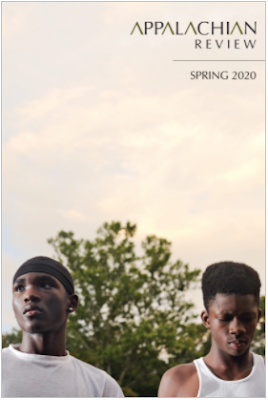WE ARE HERE
"We are here! We are here! We are here!"
—Dr. Seuss, Horton Hears a Who
I didn't plan on writing a Letter to the Editor this morning.
No, I'd awakened from a restful sleep (as evidenced by the damp spot of drool on my pillow), having been serenaded by the patter of raindrops all night. I opened my laptop to check the weather (clearing) and the scores from the midnight tennis match I was too sleepy to watch to conclusion (Sasha Zverev, in three). Then I scrolled down for more news, thumbing past sex offender photos and a bagel shop grand opening to click on “5 plays John Staton would love to see done in Wilmington.”
Having recently attended some very good plays here, and anticipating seeing more, I was intrigued to know which works our local theater critic would be advocating. I read his choices (interesting, but no real surprises) and was about to close the tab when my personal spidey sense kicked in and made me look again. And there it was. Or, more accurately, wasn't.
What I mean is, people like me didn't make the cut.
Of the five plays listed, all were by white males. And while this does not qualify as a calamity, when you're a female writer (like me), and you've just written a play whose main character is Vietnamese (like me), and you harbor the deepest doubts as to whether this work could ever be staged in a city lacking a discernible Asian population (like Wilmington)—well, you see why I might be concerned.
We writers who are not male and/or not white have something to say. We do the work, get our degrees, hone our craft. But with all the statistics piled up against us, it's hard not to wonder if we're invisible. I grew up in the south and I love the south. I don't want to live in LA or New York. But I also want to know that there's a place for me and my work in this region. That someone out there hears my voice and the voices of others like me.
And since it may not appear in the paper, here's the letter I wrote.
Dear Editor:
Interesting how the “5 plays John Staton would love to see done in Wilmington” are all by white males. According to the Dramatists Guild’s tally of regional, non-Broadway theater productions by playwrights’ gender and race, nearly two-thirds (63%) of all productions mounted across the U.S. were written by white men. That figure is nearly three times the rate for female playwrights of all races (22%), with the rate for women playwrights of color a pathetic 3.5%.
Interesting how the “5 plays John Staton would love to see done in Wilmington” are all by white males. According to the Dramatists Guild’s tally of regional, non-Broadway theater productions by playwrights’ gender and race, nearly two-thirds (63%) of all productions mounted across the U.S. were written by white men. That figure is nearly three times the rate for female playwrights of all races (22%), with the rate for women playwrights of color a pathetic 3.5%.
Let me say for the record that I am sure there’s nothing
sinister behind Staton’s choices or that his list means he’s anti-diversity. However,
when the dominance of white males is the norm, as it is for produced
playwrights, then it’s all too easy for us to be blind to our own unintended
biases.
As a biracial female playwright, I’d like to offer five
alternatives to Staton’s all-white, all-male list:
- “Circle Mirror Transformation” by Annie Baker: It’s hard choosing just one work by this gifted young playwright but, if forced to, this quiet, enthralling play would be it. No heroes, no villains. Just five ordinary characters who, in fits and starts, come to know each other and themselves in ways both funny and profound.
- “Appropriate” by Branden Jacobs-Jenkins: The American Family Drama is perhaps my favorite theatrical genre. But what this young African-American playwright does with white siblings converging at their old home following the death of the family patriarch, who may or may not have been a white supremacist, takes the genre to a whole nother level.
- “Kentucky” by Leah Nanako Winkler: What’s not to love? There’s a large cast, music and dancing, cross-cultural hijinks, and an Asian female lead who’s not a prostitute. Seriously, it would be a blast to see what local talent would do with this rambunctious, thoroughly modern script.
- “Disgraced” by Ayad Akhtar: No doubt winning the Pulitzer Prize made it the most produced play in the U.S. in 2015-16, and rightfully so. The Pakistani-American Akhtar takes an unflinching look at Islamophobia and gives voice to the challenges of being Muslim in his explosive take on the classic dinner party plot.
- “Harry and the Thief” by Sigrid Gilmer: What if someone with a time machine traveled back to 1858 in order to supply the Underground Railroad’s Harriet (Harry) Tubman with 21st century guns? That’s the mind-bending premise of this high-speed action comedy that integrates contemporary race issues with historical events. Who knew abolitionists could be such fun?




Comments
Post a Comment